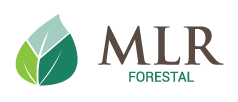News
MLR Forestal will be a pioneer in ecological restoration in Nicaragua

MLR Forestal will take its conservation areas to another level thanks to ecological restoration. “An ecological restoration is not the same as a reforestation. It is about planting trees as a structure to regenerate an entire food chain and an ecological community that will provide you with environmental services in about three, four, five years,” explains the ecologist Fabio Buitrago, in charge of the project.
The environmental services that Buitrago refers to are soil retention against erosion, increased infiltration of water into the subsoil, permanence of surface water even in the driest months, temperature regulation and increased biodiversity. The specialist deepens that the consequence of these improvements will derive in “a source ecosystem service because these areas become islands of forests in the middle of a matrix that is completely deforested because most of the territory is dedicated to livestock. So the biodiversity of the entire area finds in the MLR conservation areas a kind of oasis where it can take refuge, even in extreme situations such as hurricanes or droughts.”

This ecological restoration was based on a study conducted by the Humboldt Center between November 2021 and February 2022. The study established 16 permanent monitoring plots that are one square kilometer in size and were surveyed to find out their current status and to be able to monitor progress as the ecological restoration plan advances.
An unprecedented environmental action in Nicaragua
Buitrago comments that to develop this initiative he has studied projects in Mexico, Costa Rica, the United States and Spain as a reference, because “what we are proposing is something that I believe has not been seen before in the Nicaragua because MLR seeks to invest and carry out strategic actions to accelerate the regeneration process of its conservation areas and I would dare to say that there is no other company in Nicaragua that is doing that”, says the ecologist.
The vision of ecological restoration is framed both in the medium and long term. Fast forward fifteen years in the future, in the year 2037, “MLR is making sure to have biodiversity, conserve soils, water and also have interconnectivity with other areas that may be around. This is going to favor MLR even in his plantations because it is going to increase cocoa pollination and pest control thanks to the fact that there will be a more diverse ecosystem.”
Restore, monitor and educate
To start with this “food chain fertilizer”, as Buitrago calls it, a series of strategic actions have already been proposed and taken:

- Select those areas where it is going to be restored, prioritizing the banks of the rivers and the areas with a slope of more than 35 percent. Because restoring riparian zones protects water sources, while protecting sloping areas favors plant cover, water infiltration and helps reduce soil erosion due to natural runoff from rain.
- Define the typical species of the Siuna region with which it will be restored. There will be more than thirty species, including the genízaro, carao, capulín, jocote jobo, chilamate, laurel, ojoche, oak, black wood, among others, which have different ecological functions, including serving as food for wildlife.
- Produce the plants in the company’s nursery. This work, like the previous two, is already being carried out.
- Prepare the land where it will be planted.
- Sow the plants. A work that MLR hopes to begin to be carried out from the month of June.
- Monitor restoration. And thus value the increase in biodiversity, in the volume of water and in the improvement of its quality.
- Involve and educate neighboring communities in the protection of forest areas, both existing and newly planted.
Share




